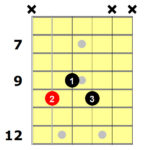Learning to play the guitar is a rewarding journey, filled with moments of pure musical joy. Yet, for many beginners, the initial stages can feel less like a harmonious melody and more like grappling with a complex jigsaw puzzle. You might be wondering, “Is Jigsaw Hard To Play Guitar?” While “jigsaw” isn’t a guitar technique, the feeling of piecing together disparate elements to create something whole perfectly encapsulates the experience of learning guitar. Let’s explore why learning guitar can feel like tackling a challenging jigsaw and how to approach it effectively.
Many aspiring guitarists find themselves initially overwhelmed. It’s not just about strumming a few chords; it’s about coordinating your fingers, understanding rhythm, learning musical theory, and developing muscle memory. Imagine opening a box of a thousand jigsaw pieces – that’s how learning guitar can feel at first glance. You see the beautiful picture on the box (playing your favorite songs), but the scattered pieces in front of you seem daunting and disconnected.
Why does learning guitar feel like such a complex puzzle? Several factors contribute to this perception:
- Multiple Skills Simultaneously: Just like a jigsaw requires you to consider shape, color, and pattern at the same time, playing guitar demands the simultaneous coordination of multiple skills. Your left hand is fretting chords, your right hand is strumming or picking, your ears are trying to discern pitch and rhythm, and your brain is processing musical information. It’s a multi-tasking feat!
- Independent Hand Coordination: One of the biggest hurdles for beginners is developing independent coordination between their hands. Your fretting hand and strumming hand are performing different tasks, often with contrasting rhythms and movements. This is akin to trying to fit pieces in different parts of the jigsaw simultaneously, requiring focused attention and practice.
- Rhythmic Complexity: Music is fundamentally about rhythm, and guitar playing is no exception. Understanding and executing different rhythms while also fretting chords can feel like trying to assemble puzzle pieces with intricate and interlocking edges. You need to internalize the pulse of the music, the rhythm of your strumming or picking, and how it all synchronizes with the chord changes.
- Musical Vocabulary: Learning chords, scales, and musical terms is like learning the “language” of music. Each chord is a piece of the puzzle, and understanding how they fit together to create songs is crucial. Initially, this musical vocabulary can seem foreign and confusing, adding to the jigsaw puzzle feeling.
However, just like even the most intricate jigsaw puzzle can be solved piece by piece, learning guitar becomes manageable when broken down into smaller, digestible steps. Think of approaching guitar learning like a pro jigsaw puzzler:
Step One: Divide and Conquer (Master the Individual Pieces)
Just as a jigsaw enthusiast might sort pieces by color or edge type, break down guitar learning into manageable components. Instead of trying to learn everything at once, focus on mastering individual skills in isolation. Practice basic chords until your fingers can form them without thinking. Work on strumming patterns until they become fluid. Learn scales in small segments. As Geddy Lee wisely advised about singing and playing bass (a similarly complex coordination task), “learning the bass parts first and learning them so well that I didn’t have to think about them while I was singing.” The same principle applies to guitar: master the individual “pieces” before combining them.
Step Two: Go Slow (Fit the Pieces Gradually)
Sting, another master musician who sings and plays, described his learning process as slowing things down to “see where the gaps were and like a jigsaw puzzle fitted it together.” Apply this approach to guitar. When learning a new song or technique, start slowly. Practice chords changes at a snail’s pace, gradually increasing speed as you become comfortable. Break down complex rhythms into simpler parts and build up the tempo incrementally. Just as you wouldn’t force a jigsaw piece, avoid rushing the learning process.
Step Three: Keep it Simple (Start with Fewer Pieces)
Kim Deal of the Pixies highlighted the importance of simplicity when singing and playing bass, noting that she often played repetitive bass lines to focus on vocals. In guitar learning, start with simple songs and chord progressions. Focus on mastering the fundamentals before tackling complex pieces. Begin with open chords and basic strumming patterns. As your skills develop, you can gradually incorporate more challenging techniques and songs. Think of starting with a smaller, less intricate jigsaw puzzle to build your skills and confidence before moving to a massive, complex one.
Step Four: Practice, Practice, Practice (Consistent Effort)
Like any skill, mastering the guitar requires consistent practice. Just as you can’t complete a jigsaw puzzle by glancing at it occasionally, you need to dedicate regular time to practice your guitar. Even short, focused practice sessions are more effective than infrequent marathon sessions. Consistency is key to developing muscle memory, improving coordination, and solidifying your understanding of musical concepts.
Learning guitar, like completing a jigsaw puzzle, is a process that requires patience, persistence, and a strategic approach. It might feel challenging initially, but by breaking it down into manageable steps, practicing consistently, and starting with simpler elements, you’ll gradually see the pieces come together. The initial feeling of a scattered jigsaw will transform into the satisfaction of a completed picture – the ability to play music and express yourself through the guitar. Embrace the challenge, enjoy the process of piecing it all together, and soon you’ll be making music, not just puzzling over it.

